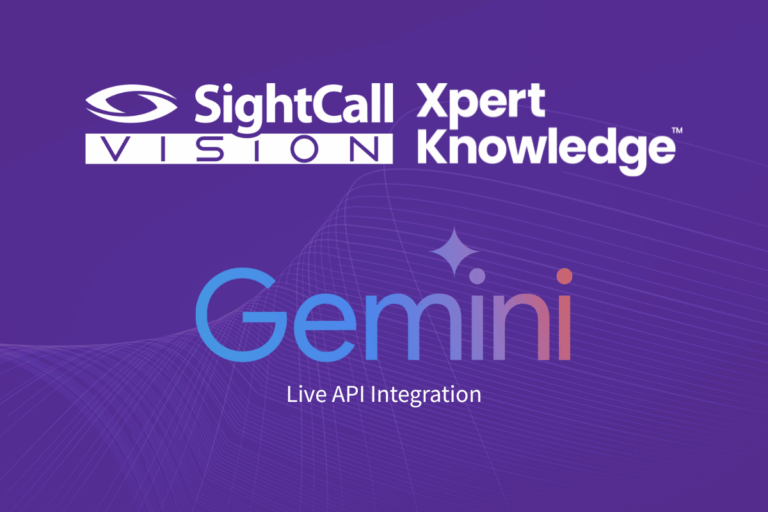When it comes to customer service tools, the humble telephone worked for decades.
It was a simple, unfussy solution to connect two human beings.
Do enterprise companies really need a Contact Center as a Service (CCaaS) solution to improve person-to-person communication?
Why use a complex software platform, with layers and layers of cutting-edge technology to assist two people trying to solve a problem?
Because it works.
In today’s digital world, speed and convenience are the king and queen of customer service.
And nothing works faster, or easier, than a first-class CCaaS platform.
More companies are learning that the journey from a traditional brick-and-mortar customer service department to a cutting-edge virtual contact center solution is transformative.
The benefits of the right CCaaS solution can be massive.
But that’s only when (and if) an organization can understand how to leverage and adapt the many capabilities and features.

What are Enterprise Call Center Solutions?
Let’s start with a simple definition.
Enterprise call center solutions are comprehensive software platforms designed to handle high-volume customer interactions and streamline the operations of large-scale contact centers within an organization.
These solutions provide a range of features and functionalities to support efficient call handling, agent management, customer engagement, and performance monitoring.
In other words, there are lots of moving parts.
Understanding these parts is key to making sure these platforms improve your customer journeys and get you closer to hitting your company’s KPIs.
Here’s a closer look at key aspects and capabilities of enterprise call center solutions:

Omnichannel Support
What it is: Enterprise call center solutions are equipped to handle customer interactions across various channels, including voice calls, email, chat, social media, SMS and video.
This allows organizations to provide consistent and seamless customer experiences regardless of the channel chosen by the customer.
Why it matters: Customers expect to be able to reach out to companies through their preferred communication channels, whether that’s traditional phone calls, email, chat, social media, messaging apps, or enhanced video support.
Omnichannel support is crucial for meeting customer expectations, adding convenience, and staying competitive in a rapidly evolving business landscape.
What is it good for?
-
Customer convenience
-
Increasing reach
-
Competitive advantage
“On average, companies with omnichannel customer engagement strategies retain 89% of their customers.” – Digizuite, 2023

Automatic Call Distribution (ACD)
What it is: ACD functionality intelligently routes incoming calls to the most appropriate agents based on predefined criteria such as skillset, availability, or priority. This ensures efficient call distribution and improves first-call resolution rates.
Why it matters: ACD enhances the overall efficiency, effectiveness, and customer satisfaction within contact centers.
It ensures that customer inquiries are directed to the right place and handled by the right people, leading to a smoother customer experience and improved operational performance.
ACD can reduce the need for multiple transfers, lower customer wait times and improve agent productivity.
What is it good for?
-
Reduced wait times
-
24/7 availability
-
Scalability
RELATED: Contact Center Optimization with Visual Assistance and Digital Process Automation

Interactive Voice Response (IVR)
What it is: IVR systems automate call handling processes by providing pre-recorded menus and prompts for callers to navigate through.
It enables self-service options for routine inquiries, allowing customers to access information or complete certain transactions without agent assistance.
Why it matters: While IVR systems offer numerous advantages, it’s important to design and implement them thoughtfully to avoid frustrating customers with complex menus or lengthy wait times.
When properly configured, IVR enhances customer service by providing robust self-service options, freeing up agents for more complex tasks, and contributing to a more streamlined and satisfying customer experience.
What is it good for?
-
Consistency
-
Cost savings
-
Priority routing
“Improving IVR can reduce contact center costs by up to 30%” – McKinsey

Call Recording and Monitoring
What it is: Enterprise call center solutions typically offer call recording capabilities to capture customer interactions for quality assurance, training, and compliance purposes.
Real-time call monitoring allows supervisors to listen in or join live calls to provide assistance or ensure service quality.
Why it matters: Call recording and monitoring contribute to a well-rounded contact center management strategy by improving agent performance, enhancing customer satisfaction, ensuring compliance, and offering valuable insights for continuous improvement.
By analyzing call recordings, contact centers can identify top-performing agents and extract best practices that can be shared across the team.
Recordings also provide a safety net for contact centers in terms of dispute resolution or compliance and security issues.
What is it good for?
-
Training and coaching
-
Benchmarking and best practices
-
Customer insights

CRM Integration
What it is: Integration with Customer Relationship Management (CRM) systems gives agents access to customer information, history, and context during interactions.
This integration makes it easier to offer personalized service and enables agents to provide more relevant and efficient support.
Why it matters: CRM integration enhances the customer-centricity of contact centers. It enables agents to deliver personalized service, streamline processes, and leverage data to build stronger relationships with customers.
CRM integration ensures that customer data is consistent across all communication channels, whether it’s phone, email, chat, or social media. This prevents customers from having to repeat information when switching channels.
What is it good for?
-
Efficient escalation
-
Automation and workflows
-
Predictive analytics

Reporting and Analytics
What it is: Robust reporting and analytics features provide insights into call center performance, agent productivity, customer satisfaction, and other key metrics.
Detailed reports and real-time dashboards help supervisors and managers track performance, identify trends, and make data-driven decisions for continuous improvement.
Why it matters: Reporting and analytics can enhance agent performance and ultimately deliver an exceptional customer experience. By harnessing the power of data, contact centers can make more informed decisions.
By identifying bottlenecks, inefficiencies, and gaps in processes, analytics empower contact centers to optimize workflows and improve overall operational efficiency.
What is it good for?
-
Agent performance evaluation
-
Continuous improvement
-
Forecasting and planning

Workforce Management
What it is: Contact center solutions often include workforce management capabilities, such as scheduling, forecasting, and adherence monitoring.
These features help optimize agent schedules, manage staffing levels, and ensure sufficient coverage during peak periods while minimizing idle time.
Why it matters: Enables contact centers to align their operations with customer demand, leading to improved performance and customer satisfaction.
What is it good for?
-
Reduced staffing costs
-
Performance metrics
-
Data-driven insights

Outbound Dialing
What it is: Some enterprise call center solutions offer outbound dialing capabilities, enabling organizations to proactively reach out to customers for sales, marketing, or service purposes. This can include automated campaigns, predictive dialing, and list management functionalities.
Why it matters: Outbound dialing expands the scope of contact centers beyond reactive customer support. When used effectively and ethically, outbound dialing can enhance customer engagement, boost sales, gather valuable insights, and contribute to overall business growth.
What is it good for?
-
Appointment selling
-
Lead generation
-
Customer retention

Security and Compliance
What it is: Enterprise call center solutions prioritize data security and compliance with industry regulations, such as GDPR or HIPAA. They implement measures like secure data transmission, access controls, and call recording encryption to protect sensitive customer information.
Why it matters: Security and compliance are essential to maintain customer trust, protect sensitive data, avoid legal consequences, and uphold the reputation of contact centers.
What is it good for?
-
Data protection
-
Trust and reputation
-
Incident response
“Average cost per data breach involving a remote worker: $5 million” – IBM Data Breach Report, 2021

Visual Assistance Platform
What it is: Visual Assistance Platforms are software solutions that combine the ease and efficiency of digital process automation and high-quality video support powered by a suite of tools including augmented reality (AR), optical character recognition (OCR) and AI computer vision. Visual Assistance Platforms such as SightCall can seamlessly integrate with your existing software to give your agents the power to see more and serve better.
Why it matters: Customer expectations are changing. People want more agency, but also more authenticity. Visual Assistance Platforms give customers the freedom to self-serve with intuitive digital flows. But they maintain the human element by making live video support available at the touch of button. Visual Assistance Platforms help companies build more efficient and more extraordinary customer experiences.
What is it good for?
-
Creating more empathetic and personal interactions
-
Solving complex problems to improve FCR
-
Simplifying and streamlining manual processes

The Future of Enterprise Contact Center Solutions
Clearly, customer service technology has come a long way.
But it’s also just getting started.
The integration of AI-powered tools and automation, is already transforming customer service even further.
These innovations are revolutionizing the way businesses interact with their customers, enabling even more personalized and efficient interactions at scale.
AI is providing agents with real-time insights, context-rich information, and predictive analytics to provide proactive solutions. And the seamless integration of AI-driven chatbots, voice assistants, and sentiment analysis tools contribute to a more streamlined and satisfying customer experience.
Digital interactions are now as effortless, effective and personal as picking up the phone for customers. But exponentially more cost-effective and impacting for enterprise organizations.
As more companies embrace new technologies and adapt their strategies, the future of enterprise contact center solutions is poised to reshape the customer-business dynamic in profound and exciting ways.



